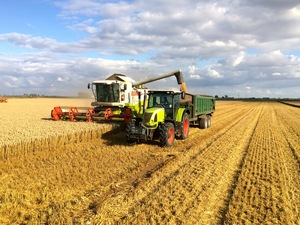Since 2012, I have been attempting to predict wheat yields in a blog at about this time of year. Looking back, 2012 was perhaps the easiest year to attempt this task. It was relatively clear that the lack of sunshine and the saturated soils would result in lower than average yields. Last year it was also reasonable to think that overall there would be very good yields. Indeed, we had a record UK average of 8.6 t/ha with the East averaging 9.1 t/ha.
This year is much more complicated. Generally, crops over-wintered in good condition and the levels of radiation that establish potential yield have been above average for almost every month this year, including the critical month of June. Night time temperatures were below average in June and consequently the crop did not respire so much overnight, hence retaining more of the day’s gains than average.
However, there have been negatives that may result in much of the potential not being realised. The heat of last week would have done wheat no favours. Luckily it occurred in perhaps the latter half of grain fill rather than earlier in this process. 200C seems about ideal for wheat, 250C is less than ideal, 300C is harmful and 350C even more harmful. Coupled with this we had high overnight temperatures where the wheat must have been respiring very actively. I cannot get a clear picture of what is the critical night temperature above which respiration is particularly harmful: the scientific literature quotes between 9 and 140C. In many areas last week, the night time temperature over two or three nights barely fell below 200C.
However, I think that the main determinant of how much of the good potential established by above average levels of radiation we harvest this year will be the availability of soil moisture. Much of the rainfall has been patchy and there are large areas of the country where rainfall in March, April and June was way below average. Looking back at the good yielding years of 1984, 2008 and 2014, it seems that May rainfall is very important to exploit wheat’s potential. This year rainfall during May was particularly patchy. The arable areas north of the Wash and also the West Midlands and parts of the South Coast tended to receive reasonable levels of rainfall in May.
This makes me think that in terms of yield we are in for a mixed UK wheat harvest, depending on the soil moisture availability in late May and June. Those areas north of the Wash which had some good May rains perhaps also missed the extremely high temperatures that were experienced further south. It seems to me, purely based on weather records, that those areas that received significantly below average rainfall in May will do well to achieve average wheat yields, except on the most moisture retentive soils. Those areas where the moisture deficits were closer to the average situation in mid-June may achieve more pleasing yields.

